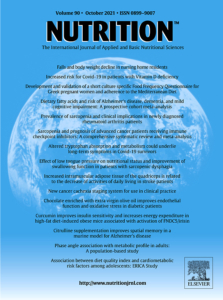Long-term association of red meat consumption and lipid profile: A 13-year prospective population-based cohort study
Authors
Affiliations
Abstract
Objectives: The long-term associations between red meat consumption and lipid profile are not completely known. This longitudinal study assessed the association of red meat consumption with lipid profile in healthy Iranian adults using repeated measurements of red meat intake.
Methods: The population-based longitudinal study was conducted within the framework of the Isfahan Cohort Study on a subsample of 1376 healthy adults, aged ≥35 y, for whom complete information was available in all three phases of the study. A simplified qualitative 48-item food frequency questionnaire, blood pressure, anthropometric measurements, and fasting serum lipids and blood sugar were evaluated in three phases. Mixed-effects linear regression was applied to examine the longitudinal associations between red meat consumption and lipid profile.
Results: After adjustment for potential confounders, each single-serving increase in red meat and organ meat consumption was significantly associated with an increment in triacylglycerol (β = 6.30; 95% confidence interval [CI], 3.97-8.63), total cholesterol (β = 3.03; 95% CI, 2.02-4.04), low-density lipoprotein (β = 3.40; 95% CI, 2.64-4.17), high-density lipoprotein (β = 0.60; 95% CI, 0.28-0.93), ratio of low-density to high-density lipoprotein (β = 0.03; 95% CI, 0.01-0.05), and non-high-density lipoprotein (β = 2.42; 95% CI, 1.41-3.43). However, processed meat consumption had no significant association with lipid profile.
Conclusions: Total red meat intake had a significant, direct association with lipid profile after a 13-year follow-up period in a cohort of the healthy Iranian population.
Keywords: HDL; Isfahan Cohort Study; LDL; Lipid profile; Non-HDL; Red meat; TC; TG.
How to Cite
. 2021 Jun;86:111144. doi: 10.1016/j.nut.2021.111144. PMID: 33592495.

